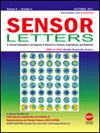Investigation of the Electrochemical Behavior of Hydroquinone at Some Conducting Polymer Electrodes and Amperometric Detection
引用次数: 0
Abstract
In this paper, a rapid and sensitive modified electrode for the determination of hydroquinone (HQ) is proposed. In this study, active compound HQ was determined from commercial drug form based on electrochemical oxidation properties at various electrodes by voltammetric methods. Electrodes modified by the electrodeposition of conducting organic polymers such as poly(3-methylthiophene, PMT), polypyrrole (PPY) and polyaniline (PAN) were used as chemical sensors for voltammetric analysis and flow injection detection of HQ. The electrochemical behavior of HQ at conducting polymer electrodes was compared and the effects on behavior of electrolyte type and its pH and the film thickness were systematically examined. The results showed that the proposed modified surface catalyzes the oxidation of HQ. Electrocatalytic efficiency decreases in order of PMT > PPY > PAN. Voltammetric peak positions were affected by the nature of the electrolyte and its pH. Also, the effect of increasing film thickness was to observe increased peak heights for oxidation potential of HQ. The best results for the determination of HQ were obtained by DPV in Na2SO4 (pH 2.0) and PMT electrodes. Polymer coated electrodes were also used in an amperometric detector for flow injection analysis of HQ. The responses of the polymer electrode were 5–15 times larger as compared to those of bare platinum. PMT showed improved performance as an amperometric detector for flow injection analysis systems over other types of polymer electrodes. Detection limits as low as 1 × 10–9 M were achieved using the PMT, compared to 1 × 10–6 M using platinum electrodes.对苯二酚在导电聚合物电极上的电化学行为及安培检测研究
本文提出了一种快速灵敏的测定对苯二酚(HQ)的修饰电极。在本研究中,利用伏安法根据不同电极上的电化学氧化特性,从商业药物形态中测定活性化合物HQ。采用导电有机聚合物如聚(3-甲基噻吩,PMT)、聚吡咯(PPY)和聚苯胺(PAN)电沉积修饰电极作为化学传感器,用于伏安分析和流动注射检测HQ。比较了HQ在导电聚合物电极上的电化学行为,系统考察了电解质类型、pH值和膜厚度对其电化学行为的影响。结果表明,所提出的改性表面对HQ的氧化具有催化作用。电催化效率依次为PMT > PPY > PAN。伏安峰的位置受电解液性质和ph值的影响。同时,随着膜厚度的增加,氧化电位的峰高也会增加。DPV法在Na2SO4 (pH 2.0)和PMT电极下测定HQ的效果最好。聚合物包覆电极也被用于流动注射分析HQ的安培检测器。聚合物电极的响应是裸铂电极的5-15倍。与其他类型的聚合物电极相比,PMT作为流动注射分析系统的安培检测器表现出更好的性能。与使用铂电极的1 × 10-6 M相比,使用PMT的检测限低至1 × 10-9 M。
本文章由计算机程序翻译,如有差异,请以英文原文为准。
求助全文
约1分钟内获得全文
求助全文
来源期刊

Sensor Letters
工程技术-电化学
自引率
0.00%
发文量
0
审稿时长
6 months
期刊介绍:
The growing interest and activity in the field of sensor technologies requires a forum for rapid dissemination of important results: Sensor Letters is that forum. Sensor Letters offers scientists, engineers and medical experts timely, peer-reviewed research on sensor science and technology of the highest quality. Sensor Letters publish original rapid communications, full papers and timely state-of-the-art reviews encompassing the fundamental and applied research on sensor science and technology in all fields of science, engineering, and medicine. Highest priority will be given to short communications reporting important new scientific and technological findings.
 求助内容:
求助内容: 应助结果提醒方式:
应助结果提醒方式:


